Sustainability Management in Practice: Organizational Change for Sustainability in Smaller Large-Sized Companies in Austria
Abstract
1. Introduction
RQ: “Who or what drives the integration of sustainability in the core business of the company?”
- Change agents: persons and organizational departments involved in and responsible for sustainability management.
- Motivation/Drivers: internal and external influential factors, stakeholder requests and impact of sustainability management on the company.
- Outcomes: themes currently addressed in companies and themes, which are considered relevant for the future.
2. Theoretical Background
2.1. Change Agents
2.1.1. Change Agents and Management
2.1.2. Sustainability Management and Organizational Units
2.2. Motivation and Drivers
2.2.1. Individual and Organizational Factors
2.2.2. Stakeholder Requests and External Drivers
2.2.3. Impact as Motivation for Sustainability Management
- Cost reduction
- Cost increase
- Risk reduction
- Sales increase
- Reputational benefit
- Employer attractiveness
- Business model innovation
- Radical innovation processes
- Collaboratively developed innovation with stakeholders
2.3. Outcomes and Themes
2.3.1. Sustainable Business Model Archetypes
- Maximize material and energy efficiency
- Create value from ‘waste’
- Substitute with renewables and natural processes
- Deliver functionality rather than ownership
- Adopt a stewardship role
- Encourage sufficiency
- Re-purpose the business for society/environment
- Develop scale-up solutions
2.3.2. Themes from Other Studies
3. Methods
3.1. Survey Development
3.2. Sample and Data Collection Procedure
3.3. Data Analysis Procedure
4. Results
4.1. Companies Reached in the Survey
4.1.1. Company Size
4.1.2. Sector
4.1.3. Types of Companies
4.2. Change Agents and Organizational Units
4.2.1. Survey Respondents and Existence of CSR Department/Team
- The CSR “team” is embedded in other organizational units;
- The CSR lead is in another (holding) company; therefore, the influence is rated in some cases, but a separate organizational unit does not exist in the company;
- The representative of the CSR department was not willing or not allowed to answer the survey, and thus, a representative of another department responded.
4.2.2. Impact of Organizational Units
4.2.3. Involvement of Organizational Units
4.2.4. Country Comparison
4.2.5. Project Phases and Organizational Units
4.2.6. Managerial Support
4.3. Motivation, Drivers and Barriers
4.3.1. Factors Promoting and Inhibiting Sustainability Implementation
4.3.2. Stakeholders Promoting and Inhibiting Sustainability Implementation
4.3.3. Impact of Sustainability Management in the Company
4.4. Themes Managed
4.4.1. Sustainability Management Approaches
4.4.2. Themes Requested by Stakeholders
4.4.3. Themes Expected to Be Relevant in the Future
5. Discussion
5.1. Change Agents and Organizational Units
5.2. Motivation and Drivers
5.3. Outcomes and Themes
5.4. The Role of Company Size Thresholds and Core Business Activities
6. Conclusions
Author Contributions
Funding
Acknowledgments
Conflicts of Interest
Appendix A
| Section | Measurement Scale |
|---|---|
| Company information | |
| Core business of the company | Self-description, text |
| Organizational unit where respondent works | |
| Number of employees | Ordinal variable |
| Revenue in previous financial year | Ordinal variable |
| Motivation and drivers | |
| Impact of stakeholders on sustainability implementation | 1 = inhibiting to 5 = promoting |
| What impact …(a) promoting factors/(b) inhibiting factors (similar lists) have on sustainability implementation | 1 = no impact to 5 = strong impact |
| How big is the impact of sustainability management in your company? (e.g., costs increase, costs decrease, reputation) | 1 = no impact to 5 = strong impact |
| Sustainability issues managed | |
| (Global) Issues that external stakeholders request to manage | 1 = never required to 5 = always required |
| Issues expected to be relevant in the future for the company (5–10 years) | 4 Topics can be named |
| Sustainability management approaches based on Sustainable Business Model Archetypes (Bocken et al. 2014)—Implementation in the last 5 years | Not implemented to fully implemented in the whole organization |
| Sustainability management approaches (Bocken et al. 2014)—Implementation planned in 5 years | Not considered, partly, fully integrated, not applicable |
| Organizational units | |
| Impact of organizational units on sustainability implementation | 1 = inhibiting to 5 = promoting |
| Impact of organizational units on sustainability implementation | 1 = inhibiting to 5 = promoting |
| How are organizational units involved in implementation | 1 = not involved to 5 = strongly involved |
| In what way organizational units are involved | Initiates, decides, organizes, implements, checks success, org. unit does not exist |
| Who of the management board actively supports implementation of sustainability | CEO, other chief officer, assistant (name) |
| Who inside the organizational units actively supports implementation of sustainability | Vice head of department, non-supervisory/staff, specialist, not applicable |
| Percentage of working time that organizational unit uses for sustainability management | 20% and less, 20–40%, (…) of all working time, all persons |
Appendix B
| Sector | Sample | Sample Weights, % | Population | Population Weights, % |
|---|---|---|---|---|
| (A) Agriculture, forestry and fishing | 2 | 3.9 | 2 | 0.3 |
| (B) Mining and quarrying | 0 | 0 | 2 | 0.3 |
| (C) Manufacturing | 22 | 43.1 | 236 | 37.0 |
| (D) Electricity, gas, steam and air conditioning supply | 0 | 0 | 2 | 0.3 |
| (E) Water supply; sewage, waste management and remediation activities | 1 | 2 | 2 | 0.3 |
| (F) Construction | 4 | 7.8 | 34 | 5.3 |
| (G) Wholesale and retail trade; repair of motor vehicles and motorcycles | 7 | 13.7 | 125 | 19.6 |
| (H) Transportation and storage | 1 | 2 | 18 | 2.8 |
| (I) Accommodation and food service activities | 2 | 3.9 | 5 | 0.8 |
| (J) Information and communication | 2 | 3.9 | 13 | 2.0 |
| (K) Financial and insurance activities | 1 | 2 | 52 | 8.2 |
| (L) Real estate activities | 2 | 3.9 | 10 | 1.6 |
| (M) Professional, scientific and technical activities | 6 | 11.8 | 93 | 14.6 |
| (N) Administrative and support service activities | 0 | 0 | 22 | 3.4 |
| (O) Public administration and defense; compulsory social security | 0 | 0 | 1 | 0.2 |
| (P) Education | 0 | 0 | 3 | 0.5 |
| (Q) Human health and social work activities | 1 | 2 | 16 | 2.5 |
| (R) Arts, environment and recreation | 0 | 0 | 1 | 0.2 |
| (S) Other service activities | 0 | 0 | 1 | 0.2 |
| Total | 51 | 100 | 638 | 100 |
Appendix C
| Test Statistics a,b | ||||||||
|---|---|---|---|---|---|---|---|---|
| Research and Development | Manufacturing | Logistics/Distribution | Quality Control | Investor Relations | Finance | Financial and Management Accounting | Strategic Planning | |
| Chi-Square | 11.065 | 13.688 | 16.334 | 14.185 | 8.095 | 13.543 | 8.532 | 12.625 |
| df | 3 | 3 | 3 | 3 | 3 | 3 | 3 | 3 |
| Asymp. Sig. | 0.011 | 0.003 | 0.001 | 0.003 | 0.044 | 0.004 | 0.036 | 0.006 |
| a. Kruskal Wallis Test | ||||||||
| b. Grouping Variable: Groups based on core business | ||||||||
| Organizational Unit | Sample1-Sample2 | Test Statistic | Std. Error | Std. Test Statistic | Sig. | Adj.Sig. | Asymptotic Significances (2-Sided Test) |
|---|---|---|---|---|---|---|---|
| R&D | Retail-Service | 20.974 | 6.943 | 3.021 | 0.003 | 0.015 | 0.011 |
| R&D | Retail-Manufacturing and Service | 19.373 | 7.237 | 2.677 | 0.007 | 0.045 | 0.011 |
| Manufacturing | Retail-Service | 24.468 | 7.003 | 3.494 | 0.000 | 0.003 | 0.003 |
| Logistics/distribution | Retail-Service | 25.468 | 7.010 | 3.633 | 0.000 | 0.002 | 0.001 |
| Logistics/distribution | Manufacturing and Service-Service | 18.682 | 6.517 | 2.867 | 0.004 | 0.025 | 0.001 |
| Logistics/distribution | Manufacturing-Service | −16.765 | 5.279 | -3.176 | 0.001 | 0.009 | 0.001 |
| Quality control | Retail-Manufacturing and Service | 20.595 | 7.275 | 2.831 | 0.005 | 0.028 | 0.003 |
| Quality control | Retail-Service | 25.429 | 6.979 | 3.643 | 0.000 | 0.002 | 0.003 |
| Investor relations | No significance after Bonferroni correction | 0.044 | |||||
| Finance | Retail-Manufacturing | 21.292 | 6.128 | 3.474 | 0.001 | 0.003 | 0.004 |
| Finance | Retail-Service | 22.545 | 6.898 | 3.269 | 0.001 | 0.006 | 0.004 |
| Financial management and accounting | Retail-Service | 19.370 | 6.894 | 2.810 | 0.005 | 0.030 | 0.036 |
| Strategic planning | Retail-Manufacturing | 17.262 | 6.169 | 2.798 | 0.005 | 0.031 | 0.006 |
| Strategic planning | Retail-Service | 23.792 | 6.943 | 3.427 | 0.001 | 0.004 | 0.006 |
Appendix D
| Categories | Themes Named | Frequency |
|---|---|---|
| Raw materials | Save raw materials/resources, use secondary raw materials | 10 |
| Sustainable material sourcing | 3 | |
| Products | Sustainable products | 3 |
| Life cycle of goods | 2 | |
| Energy efficiency, Energy | 11 | |
| Circular economy | 1 | |
| Energy | Sustainable electricity sourcing, use of renewable energy | 6 |
| Energy self sufficiency | 2 | |
| Electricity demand due to increased technological intensity | 5 | |
| Waste | Waste, waste sorting and avoidance | 6 |
| Electronic waste | 1 | |
| Reduce plastic waste | 1 | |
| Climate change | Climate compatibility, climate protection, climate change | 6 |
| Pollution, CO2 | CO2 pollution, carbon footprint | 8 |
| Air pollution | 3 | |
| Water pollution | 1 | |
| Pollution from materials, chemicals, toxins | 2 | |
| Soil residues, fertilization | 2 | |
| Transport | Green transport | 3 |
| Themes Named | Frequency |
|---|---|
| Working conditions, Health and safety | 8 |
| Education and training, incl. Sustainability education | 6 |
| Secure jobs | 6 |
| Family-career friendly work hours, work-life balance | 5 |
| Fair remunerations | 4 |
| Age-equitable workplaces | 4 |
| Equal rights | 4 |
| Employee protection | 2 |
| Industry 4.0 | 2 |
| Wellbeing & resilience, mental health | 2 |
| Inclusion of migrants | 2 |
| Employee loyalty | 2 |
| Human rights | 2 |
| Competent personnel | 2 |
| Generational management | 1 |
| Income gap | 1 |
| Pollution load | 1 |
| Innovation and infrastructure | 1 |
References
- Bocken, N.M.P.; Short, S.W.; Rana, P.; Evans, S. A literature and practice review to develop sustainable business model archetypes. J. Clean. Prod. 2014, 65, 42–56. [Google Scholar] [CrossRef]
- Millar, C.; Hind, P.; Millar, C.; Hind, P.; Millar, C.; Magala, S. Sustainability and the need for change: Organisational change and transformational vision. J. Organ. Chang. Manag. 2012, 25, 489–500. [Google Scholar] [CrossRef]
- Rockström, J.; Steffen, W.; Noone, K.; Persson, Å.; Chapin, F.S.; Lambin, E.F.; Foley, J.A. A safe operating environment for humanity. Nature 2009, 461, 472–475. [Google Scholar] [CrossRef] [PubMed]
- Broman, G.I.; Robèrt, K.-H. A Framework for Strategic Sustainable Development. J. Clean. Prod. 2015, 140, 1–15. [Google Scholar] [CrossRef]
- Schaltegger, S.; Hansen, E.G.; Lüdeke-Freund, F. Business Models for Sustainability: Origins, Present Research, and Future Avenues. Organ. Environ. 2016, 29, 3–10. [Google Scholar] [CrossRef]
- Stubbs, W.; Cocklin, C. Conceptualizing a “Sustainability Business Model”. Organ. Environ. 2008, 21, 103–127. [Google Scholar] [CrossRef]
- Rowe, M. Reputation, Relationships and Risk: A CSR Primer for Ethics Officers. Bus. Soc. Rev. 2006, 111, 441–455. [Google Scholar] [CrossRef]
- Baumgartner, R.; Korhonen, J. Strategic thinking for sustainable development. Sustain. Dev. 2010, 75, 71–75. [Google Scholar] [CrossRef]
- Kurucz, E.C.; Colbert, B.A.; Lüdeke-Freund, F.; Upward, A.; Willard, B. Relational leadership for strategic sustainability: Practices and capabilities to advance the design and assessment of sustainable business models. J. Clean. Prod. 2017, 140, 189–204. [Google Scholar] [CrossRef]
- Sroufe, R. Integration and organizational change towards sustainability. J. Clean. Prod. 2017, 162, 315–329. [Google Scholar] [CrossRef]
- Griffiths, A.; Petrick, J.A. Corporate architectures for sustainability. Int. J. Oper. Prod. Manag. 2001, 21, 1573–1585. [Google Scholar] [CrossRef]
- Ingham, M.; Havard, C. CSR as Strategic and Organizational Change at “Groupe La Poste”. J. Bus. Ethics 2017, 146, 563–589. [Google Scholar] [CrossRef]
- Lozano, R. Are companies planning their organisational changes for corporate sustainability? An analysis of three case studies on resistance to change and their strategies to overcome it. Corp. Soc. Responsib. Environ. Manag. 2013, 20, 275–295. [Google Scholar] [CrossRef]
- Rauter, R.; Jonker, J.; Baumgartner, R.J. Going one’s own way: Drivers in developing business models for sustainability. J. Clean. Prod. 2014, 140, 144–154. [Google Scholar] [CrossRef]
- Dentchev, N.; Rauter, R.; Jóhannsdóttir, L.; Snihur, Y.; Rosano, M.; Baumgartner, R.; Nyberg, T.; Tang, X.; van Hoof, B.; Jonker, J. Embracing the variety of sustainable business models: A prolific field of research and a future research agenda. J. Clean. Prod. 2018, 194, 695–703. [Google Scholar] [CrossRef]
- Linnenluecke, M.K.; Griffiths, A. Corporate sustainability and organizational culture. J. World Bus. 2010, 45, 357–366. [Google Scholar] [CrossRef]
- Baumgartner, R.J. Organizational culture and leadership: Preconditions for the development of sustainable corporation. Sustain. Dev. 2009, 17, 102–113. [Google Scholar] [CrossRef]
- Siebenhüner, B.; Arnold, M. Organizational learning to manage sustainable development. Bus. Strategy Environ. 2007, 16, 339–353. [Google Scholar] [CrossRef]
- Aguinis, H.; Glavas, A. What We Know and Don’t Know About Corporate Social Responsibility: A Review and Research Agenda. J. Manag. 2012, 38, 932–968. [Google Scholar] [CrossRef]
- Engert, S.; Rauter, R.; Baumgartner, R.J. Exploring the integration of corporate sustainability into strategic management: A literature review. J. Clean. Prod. 2016, 112, 2833–2850. [Google Scholar] [CrossRef]
- Schaltegger, S.; Hörisch, J.; Windolph, S.E.; Harms, D. Corporate Sustainability Barometer 2012. Praxisstand und Fortschritt des Nachhaltigkeitsmanagements in den größten Unternehmen Deutschlands; Center for Sustainability Management e.V.: Lüneburg, Deutschland, 2012; ISBN 978-3-942638-26-5. [Google Scholar]
- Schaltegger, S.; Harms, D.; Hörisch, J.; Windolph, S.E. International Corporate Sustainability Barometer: A Comparative Analysis of 11 Countries; Center for Sustainability Management: Lüneburg, Germany, 2013; pp. 1–56. ISBN 9783942638388. [Google Scholar]
- Witjes, S.; Vermeulen, W.J.V.; Cramer, J.M. Exploring corporate sustainability integration into business activities. Experiences from 18 small and medium sized enterprises in The Netherlands. J. Clean. Prod. 2017, 153, 528–538. [Google Scholar] [CrossRef]
- Ortiz-Avram, D.; Domnanovich, J.; Kronenberg, C.; Scholz, M. Exploring the integration of corporate social responsibility into the strategies of small- and medium-sized enterprises: A systematic literature review. J. Clean. Prod. 2018, 201, 254–271. [Google Scholar] [CrossRef]
- European Commission. Available online: http://ec.europa.eu/growth/smes/business-friendly-environment/sme-definition_en (accessed on 1 May 2017).
- Swaen, V.; Louche, C.; Van Liedekerke, L.; Vawalleghem, D. 2015 Corporate Responsibility Barometer for Belgium. On the Road towards a Sustainable Economy in Belgium. Available online: https://theshift.be/uploads/media/5616351256256/2015CRBarometer_ENG.pdf?production-36f0f2b (accessed on 1 November 2017).
- Baumgartner, R.J.; Rauter, R. Strategic perspectives of corporate sustainability management to develop a sustainable organization. J. Clean. Prod. 2017, 140, 81–92. [Google Scholar] [CrossRef]
- Engert, S.; Baumgartner, R.J. Corporate sustainability strategy–bridging the gap between formulation and implementation. J. Clean. Prod. 2016, 113, 822–834. [Google Scholar] [CrossRef]
- Welford, R.; Chan, C.; Man, M. Priorities for corporate social responsibility: A survey of businesses and their stakeholders. Corp. Soc. Responsib. Environ. Manag. 2008, 15, 52–62. [Google Scholar] [CrossRef]
- Trapp, N.L. Stakeholder involvement in CSR strategy-making? Clues from sixteen Danish companies. Public Relat. Rev. 2014, 40, 42–49. [Google Scholar] [CrossRef]
- De Gooyert, V.; Rouwette, E.; van Kranenburg, H.; Freeman, E. Reviewing the role of stakeholders in Operational Research: A stakeholder theory perspective. Eur. J. Oper. Res. 2017, 262, 402–410. [Google Scholar] [CrossRef]
- Ritala, P.; Huotari, P.; Bocken, N.; Albareda, L.; Puumalainen, K. Sustainable business model adoption among S&P 500 firms: A longitudinal content analysis study. J. Clean. Prod. 2018, 170, 216–226. [Google Scholar] [CrossRef]
- Kurucz, E.C.; Colbert, B.A.; Wheeler, D. The Business Case for Corporate Social Responsibility. In The Oxford Handbook of Corporate Social Responsibility; Crane, A., McWilliams, A., Matten, D., Moon, J., Siegel, D., Eds.; Oxford University Press: Oxford, UK, 2008; pp. 83–112. ISBN 9780199211593. [Google Scholar]
- Schaltegger, S.; Freund, F.L.; Hansen, E.G. Business cases for sustainability: The role of business model innovation for corporate sustainability. Int. J. Innov. Sustain. Dev. 2012, 6, 95–119. [Google Scholar] [CrossRef]
- Heiskanen, E.; Thidell, Å.; Rodhe, H. Educating sustainability change agents: The importance of practical skills and experience. J. Clean. Prod. 2016, 123, 218–226. [Google Scholar] [CrossRef]
- Visser, W.; Crane, A. Corporate Sustainability and the Individual: Understanding What Drives Sustainability Professionals as Change Agents. SSRN eLibrary 2010, 1–36. [Google Scholar] [CrossRef]
- Broman, G.; Robèrt, K.H.; Collins, T.J.; Basile, G.; Baumgartner, R.J.; Larsson, T.; Huisingh, D. Science in support of systematic leadership towards sustainability. J. Clean. Prod. 2017, 140, 1–9. [Google Scholar] [CrossRef]
- Business & Society Belgium. 2011 Barometer of Social Responsibility. Sustainable Development Firmly Rooted in Companies in Belgium. Available online: http://www.csr360gpn.org/uploads/files/resources/BSB_Barometer2011_EN_DEF.pdf (accessed on 1 November 2017).
- Kiron, D.; Unruh, G.; Reeves, M.; Kruschwitz, N.; Rubel, H.; ZumFelde, A.M. Corporate Sustainability at A Crossroads. MIT Sloan Manag. Rev. 2017, 58, 1–27. [Google Scholar]
- Schaltegger, S.; Zvezdov, D. Gatekeepers of sustainability information: Exploring the roles of accountants. J. Account. Organ. Chang. 2015, 11, 333–361. [Google Scholar] [CrossRef]
- Berson, Y.; Oreg, S.; Dvir, T. CEO values, organizational culture and firm outcomes. J. Organ. Behav. 2008, 29, 615–633. [Google Scholar] [CrossRef]
- Naidoo, M.; Gasparatos, A. Corporate Environmental Sustainability in the retail sector: Drivers, strategies and performance measurement. J. Clean. Prod. 2018, 203, 125–142. [Google Scholar] [CrossRef]
- Bidmon, C.M.; Knab, S.F. The three roles of business models in societal transitions: New linkages between business model and transition research. J. Clean. Prod. 2018, 178, 905–916. [Google Scholar] [CrossRef]
- Yip, A.W.H.; Bocken, N.M.P. Sustainable business model archetypes for the banking industry. J. Clean. Prod. 2018, 174, 150–169. [Google Scholar] [CrossRef]
- Liew, W.; Adhitya, A.; Srinivasan, R. Sustainability trends in the process industries: A text mining-based analysis. Comput. Ind. 2014, 65, 393–400. [Google Scholar] [CrossRef]
- Hörisch, J.; Johnson, M.P.; Schaltegger, S. Implementation of Sustainability Management and Company Size: A Knowledge-Based View. Bus. Strategy Environ. 2015, 24, 765–779. [Google Scholar] [CrossRef]
- Pallant, J. SPSS Survival Manual: A Step by Step Guide to Data Analysis Using IBM SPSS, 6th ed.; Allen & Unwin: Crows Nest, Austrialia, 2016; pp. 203–238. ISBN 9781760291952. [Google Scholar]
- Holm, S. A simple sequentially rejective multiple test procedure. Scand. J. Stat. 1979, 6, 65–70. [Google Scholar]
- Statistics Austria. OENACE 2008—Structure. Available online: http://www.statistik.at/KDBWeb/kdb_VersionAuswahl.do?KDBtoken=null&versID=10438&sprache=EN (accessed on 1 August 2018).
- EUR-Lex. Available online: https://eur-lex.europa.eu/eli/reco/2003/361/oj (accessed on 15 September 2018).
- Chen, M.; Yang, Z.; Dou, W.; Wang, F. Flying or dying? Organizational change, customer participation, and innovation ambidexterity in emerging economies. Asia Pac. J. Manag. 2018, 35, 97–119. [Google Scholar] [CrossRef]
- Hahn, T.; Figge, F.; Pinkse, J.; Preuss, L. A Paradox Perspective on Corporate Sustainability: Descriptive, Instrumental, and Normative Aspects. J. Bus. Ethics 2018, 148, 235–248. [Google Scholar] [CrossRef]
- Baumgartner, R.J. Managing corporate sustainability and CSR: A conceptual framework combining values, strategies and instruments contributing to sustainable development. Corp. Soc. Responsib. Environ. Manag. 2014, 21, 258–271. [Google Scholar] [CrossRef]
- Hahn, T.; Pinkse, J.; Preuss, L.; Figge, F. Tensions in Corporate Sustainability: Towards an Integrative Framework. J. Bus. Ethics 2015, 127, 297–316. [Google Scholar] [CrossRef]
- Ivory, S.B.; Brooks, S.B. Managing Corporate Sustainability with a Paradoxical Lens: Lessons from Strategic Agility. J. Bus. Ethics 2018, 148, 347–361. [Google Scholar] [CrossRef]
- Preuss, L.; Gold, M.; Rees, C. (Eds.) Corporate Social Responsibility and Trade Unions: Perspectives Across Europe; Routledge: London, UK, 2015; ISBN 9780415856812. [Google Scholar]



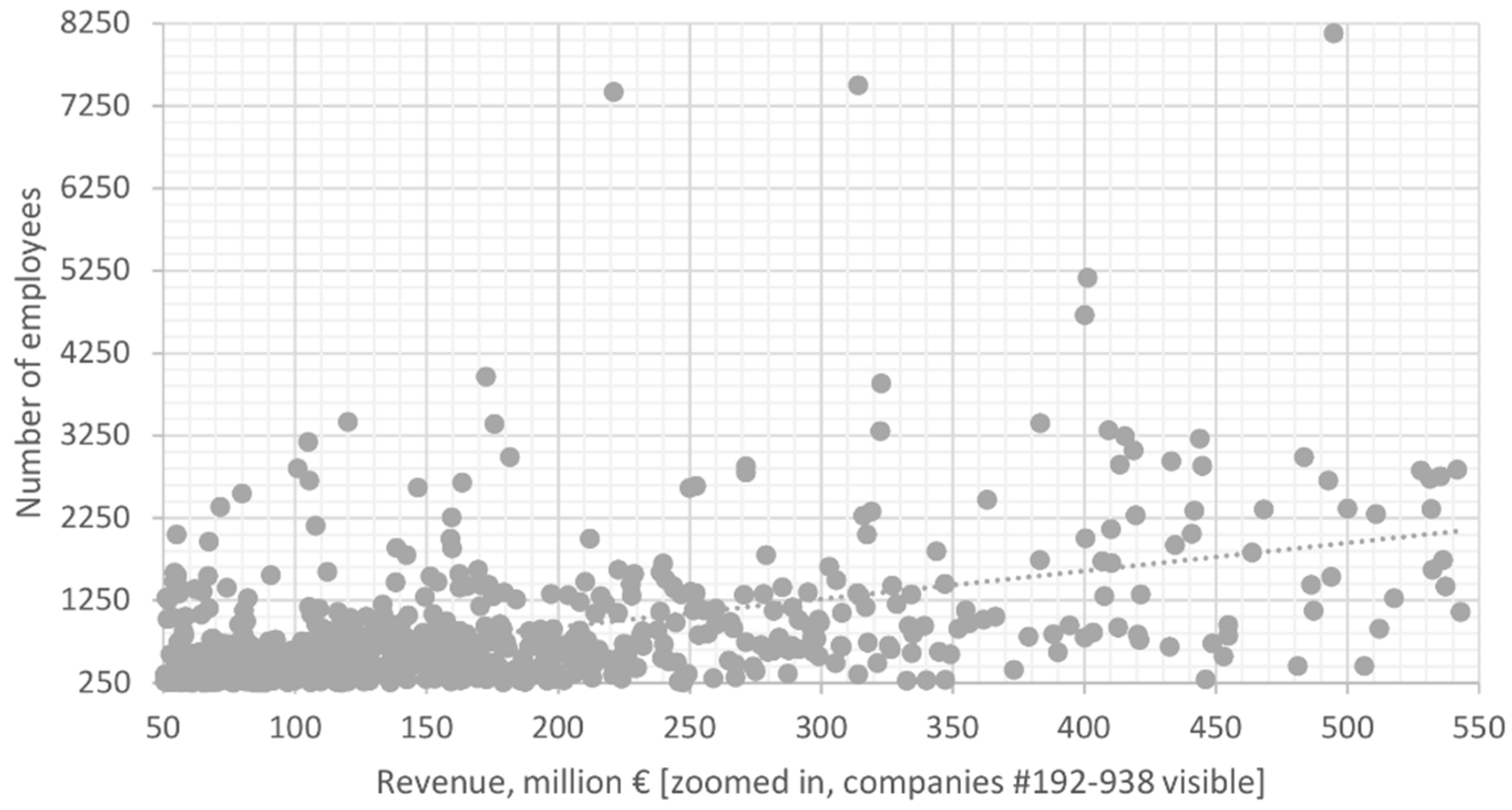
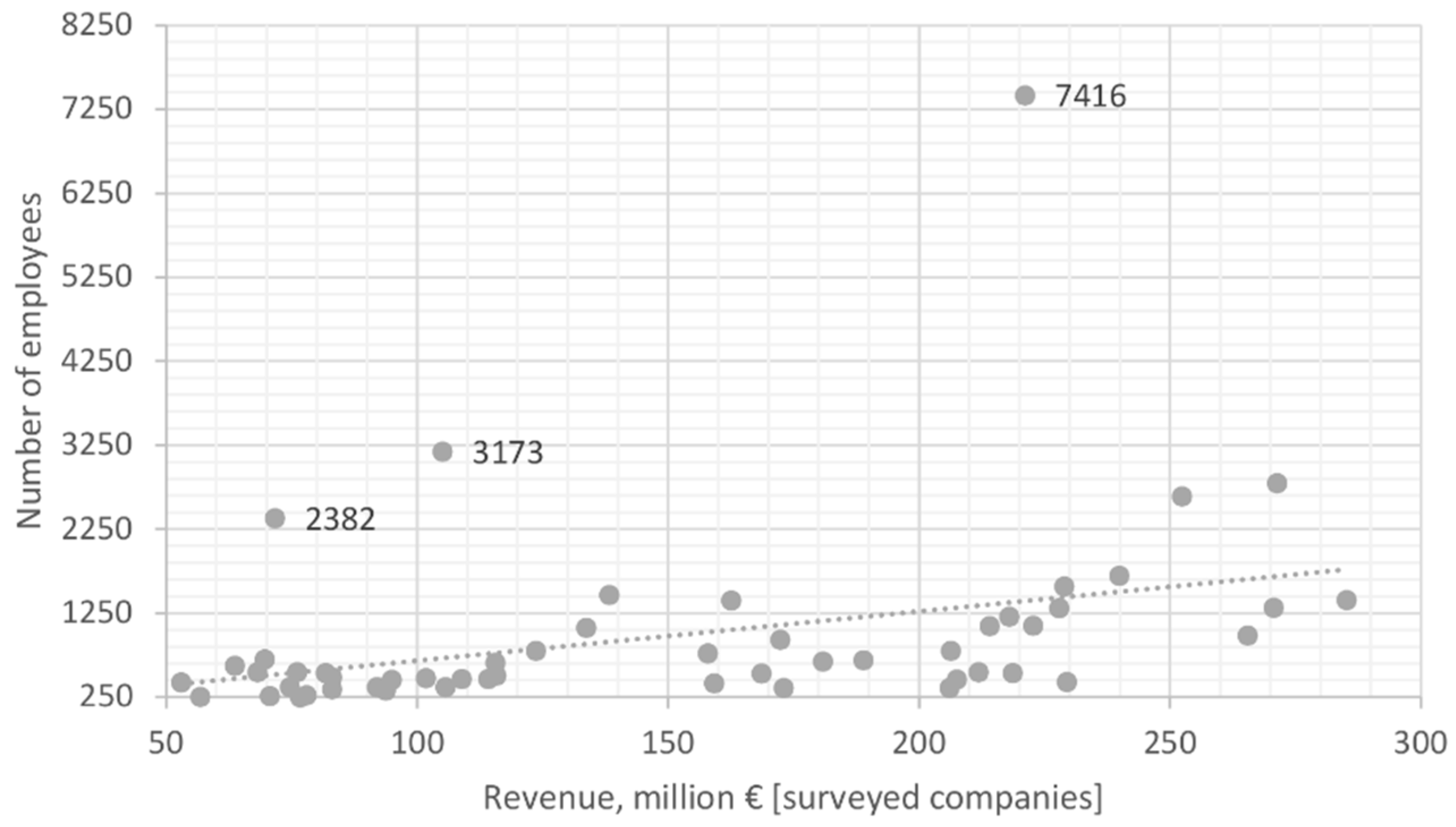
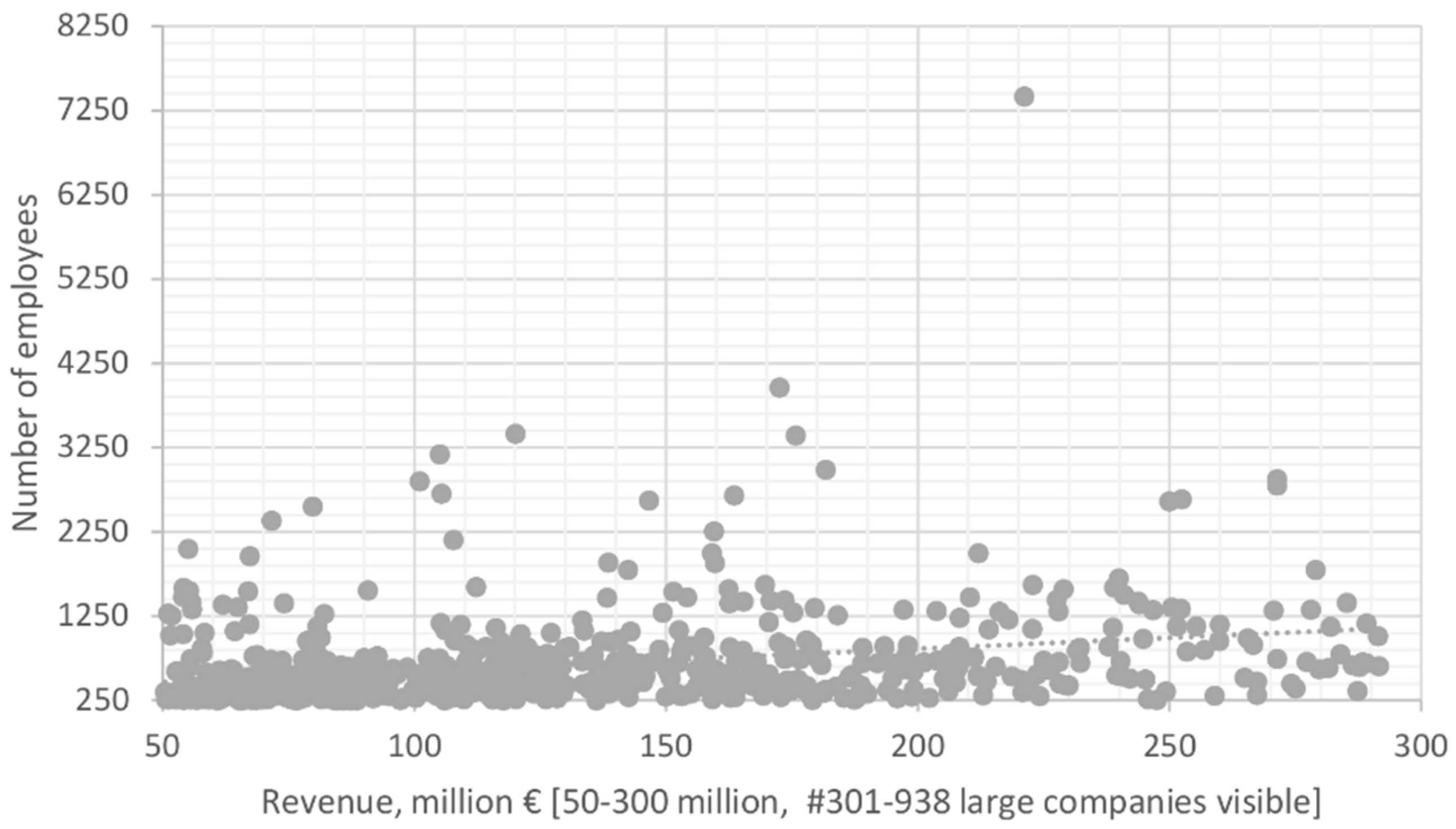
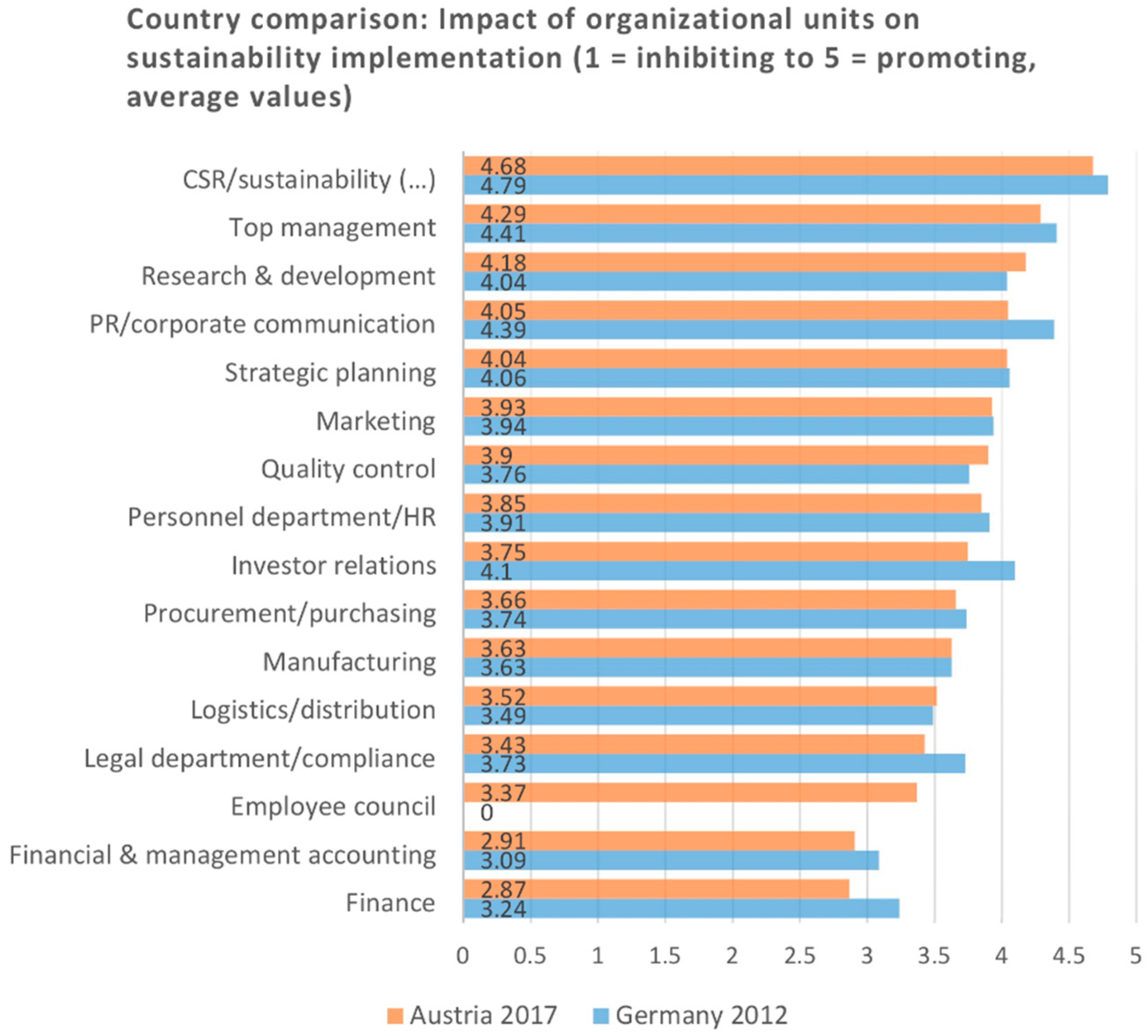


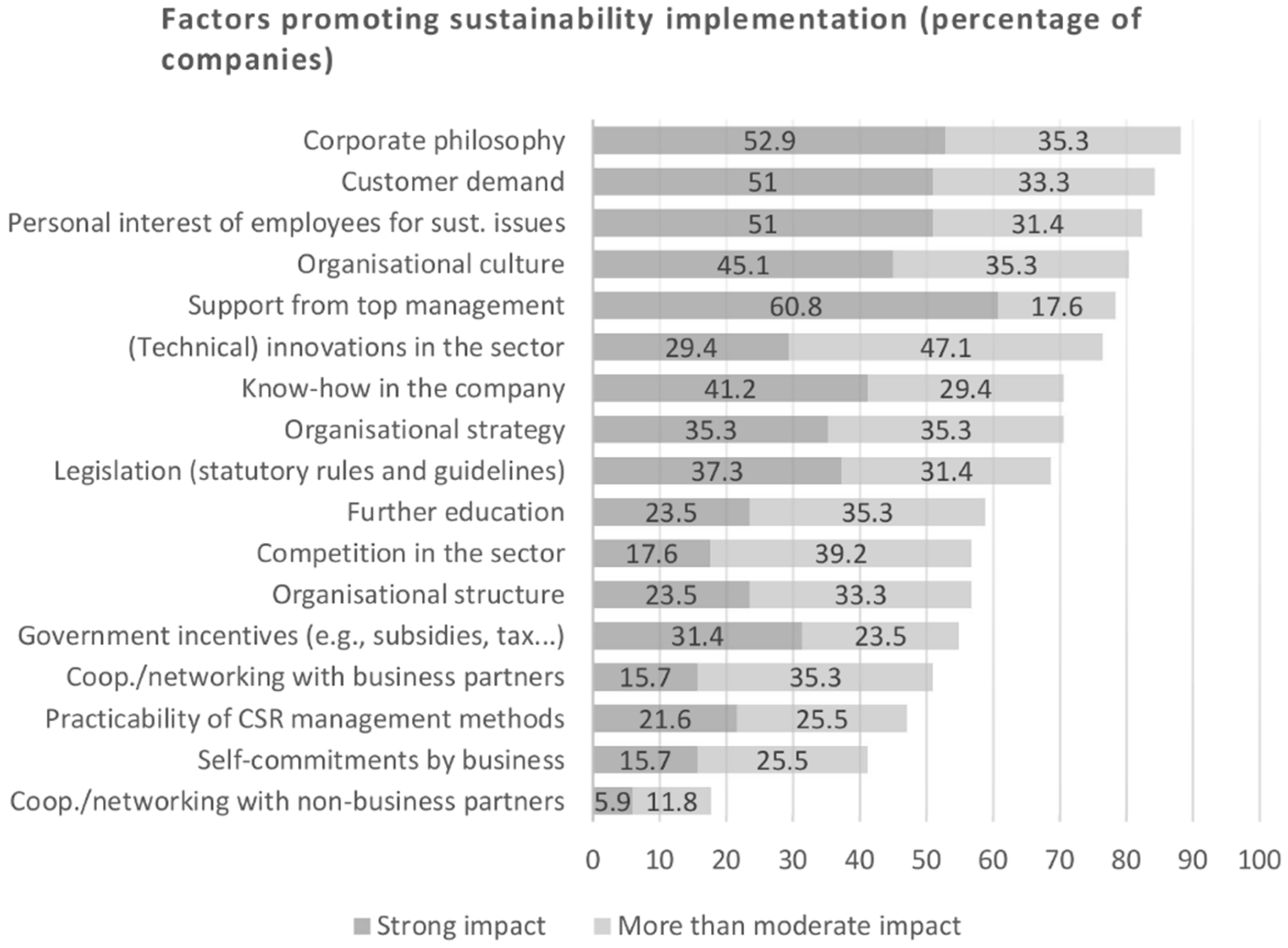


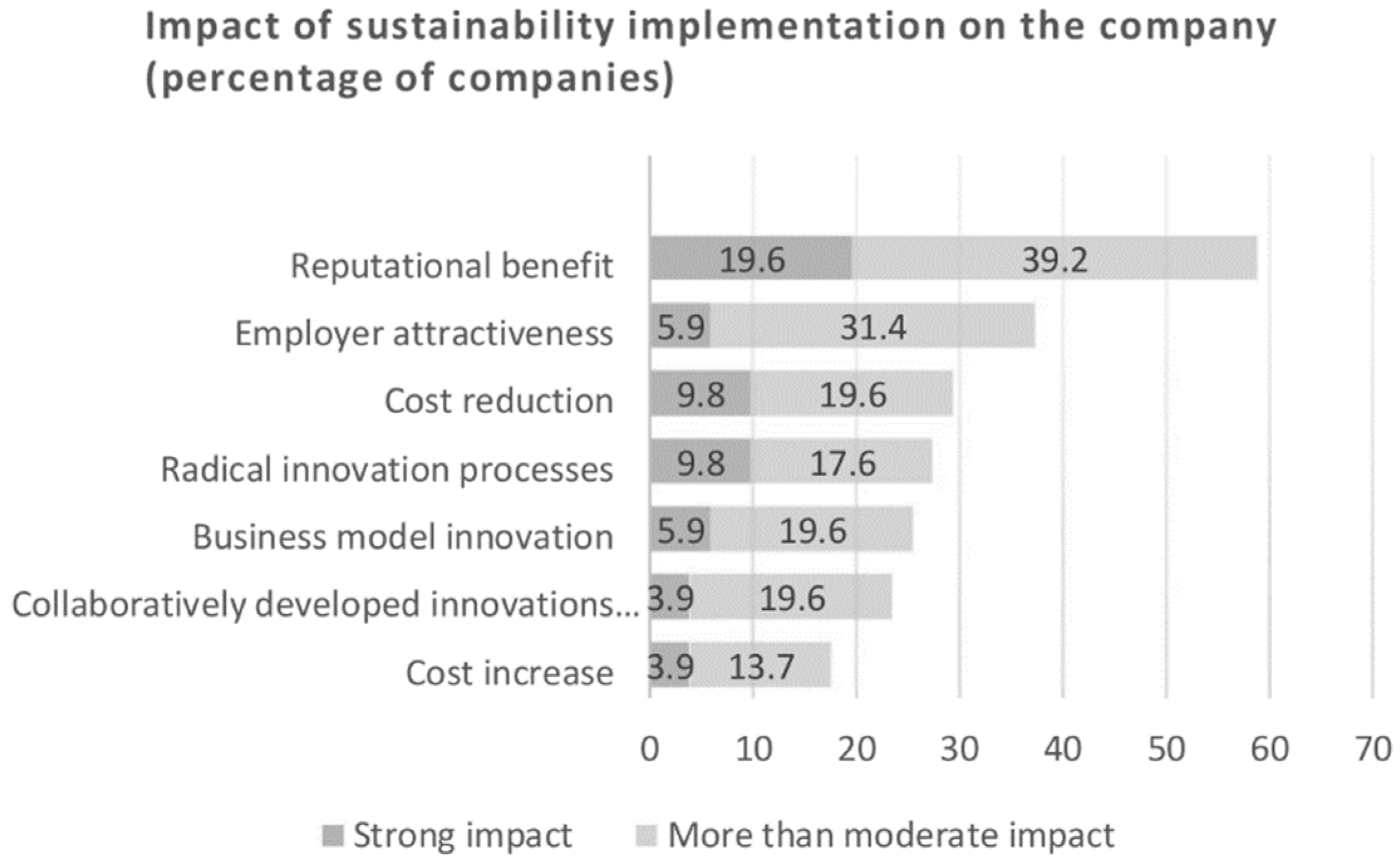

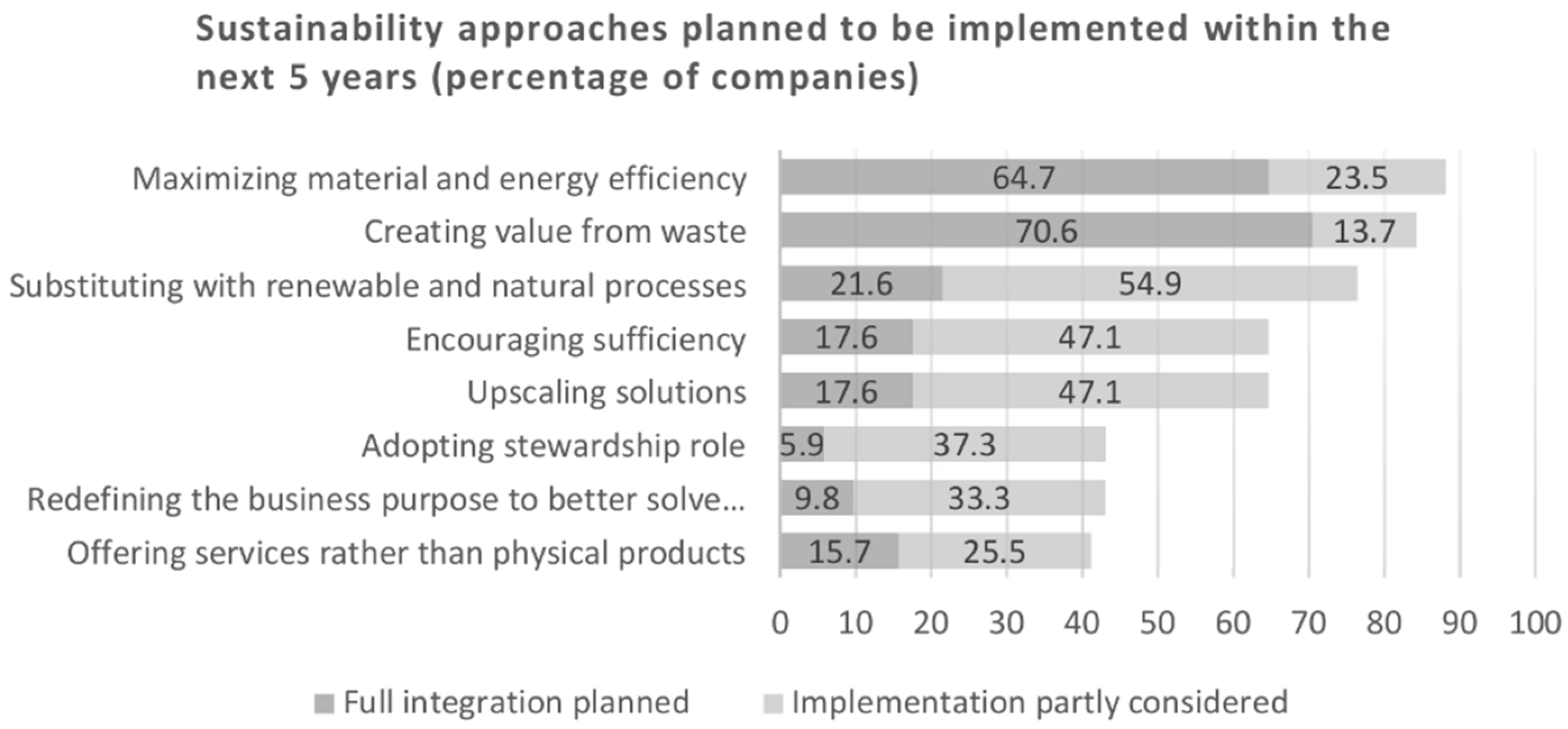


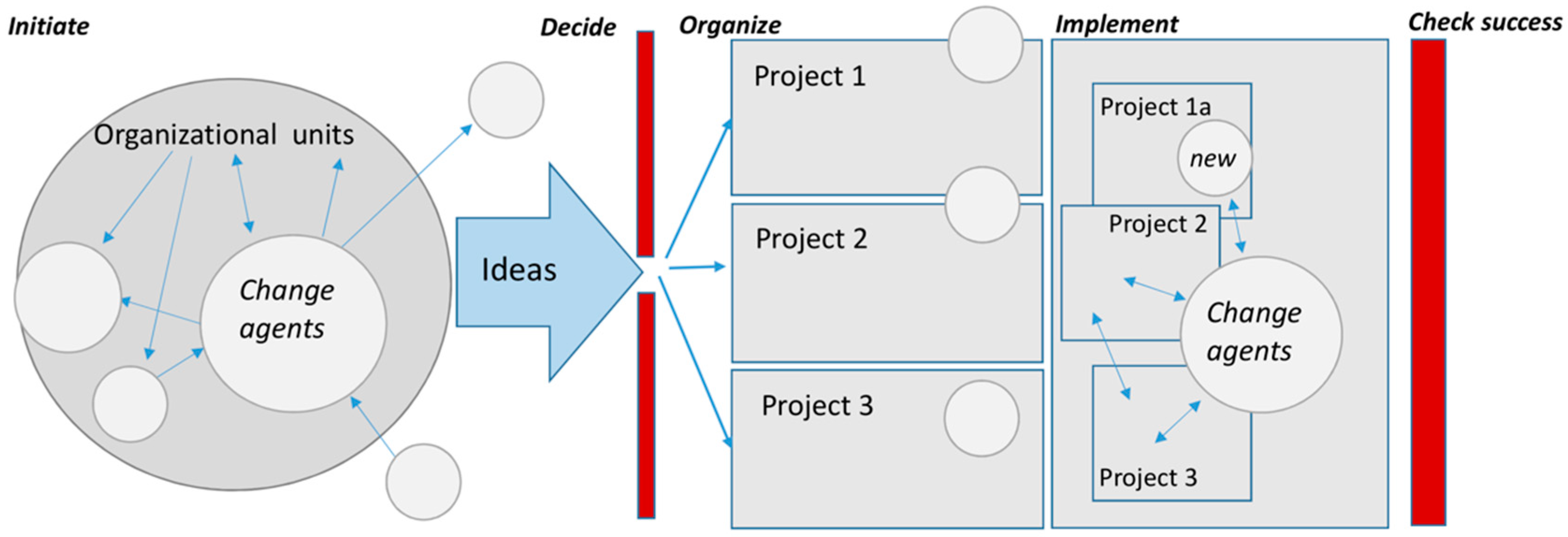
| Internal and External Drivers | Organizational Influences | Supporting and Hindering Factors |
|---|---|---|
| Legal compliance | Company size | Management control |
| Competitive advantage | Company scope | Stakeholder engagement |
| Cost reduction | Company structure | Organizational learning and knowledge management |
| Economic performance | Industry type | Transparency and communication |
| Innovation | Industry structure | Manager attitude and behavior |
| Social and environmental responsibility | Position within the industry | Organizational culture |
| Risk management | Complexity | |
| Corporate reputation | Investments | |
| Quality management |
| Barriers to Change | ||
| Individuals | Groups | Organizational |
| Misunderstanding/Lack of communication | Group culture | Lack of strategy, Lack of long-term plans |
| Lack of trust | Ignoring institutions in the group | Bureaucracy |
| Threat to job status/security | Individual-group conflict | Lack of top management commitment |
| Lack of awareness | ||
| Unwillingness to change | ||
| Denial about business impact on society and environment | ||
| Linear thinking | ||
| Fear of changes | ||
| Extra work added to day-to-day activities | ||
| Strategies | ||
| Negotiation, manipulation, participation | Group participation in change | New strategies, frameworks, policies |
| Better information in company | Individual-groups interactions | Identify champions |
| Lifelong learning | Changing group values | Collaboration |
| Educated workers | Alignment of key factors, e.g., vision | |
| Empowerment of employees | ||
| Changing attitudes | ||
| Country | Year | Company Size, Sectors |
|---|---|---|
| Austria [14] | 2014 | Mainly SMEs, cross-industry case studies |
| Belgium [26,38] | 2011, 2015 | Companies of all sizes, all sectors |
| Germany [21] | 2012 | The largest companies, all sectors |
| Germany [46] | 2012 | SMEs and large companies, all sectors |
| Hong Kong [29] | 2008 | Companies of all sizes, all sectors, and stakeholders |
| 11 countries—Australia, Belgium, France, Germany, Hungary, Japan, South Korea, Spain, Switzerland, UK, USA [22] | 2012 | The largest companies, all sectors |
| Number of Companies | 638 |
|---|---|
| No contact possible | 32 |
| “Doubles” | 40 |
| Contacted | 566 |
| Declined participation | 50 |
| Opened link | 34 |
| Answered (incl. empty answers) | 57 |
| Answered (excl. empty answers) | 51 |
| Type of Core Business Activities | Number in Sample | Weight in Sample, (51), % | Weight in Population, (638), % |
|---|---|---|---|
| Manufacturing | 24 | 47.1 | 35.5 |
| Service | 11 | 21.6 | 18.8 |
| Manufacturing and service | 9 | 17.6 | 6.4 |
| Retail | 7 | 13.7 | 18.0 |
| Holdings, banks, insurance | 0 | 0 | 21.2 |
| Total | 51 | 100 | 100 |
| Organizational Unit | Frequency | Percent |
|---|---|---|
| CSR/sustainability (incl. EHS/environment/occupational safety) | 9 | 17.6 |
| Top management | 9 | 17.6 |
| Personnel department/HR | 6 | 11.8 |
| Quality control | 6 | 11.8 |
| Multiple departments 1 | 6 | 11.8 |
| Other 2 | 6 | 11.8 |
| Procurement/purchasing | 3 | 5.9 |
| Marketing | 2 | 3.9 |
| Strategic planning | 2 | 3.9 |
| Legal department/ compliance | 1 | 2.0 |
| Logistics/distribution | 1 | 2.0 |
| Total | 51 | 100.0 |
| Organizational Unit | Promote, % Companies | Inhibit, % Companies | Organizational Unit | Promote, % Companies | Inhibit, % Companies |
|---|---|---|---|---|---|
| Top management | 82.4 | 3.9 | Quality control | 51 | 5.9 |
| CSR/sustainability 1 | 80.4 | 2 | Manufacturing | 47.1 | 9.8 |
| PR/corporate communication | 64.7 | 5.9 | Logistics/distribution | 43.1 | 13.7 |
| Procurement/purchasing | 62.7 | 23.5 | Employee council | 39.2 | 15.7 |
| Marketing | 62.7 | 5.9 | Legal dep./compliance | 31.4 | 9.8 |
| Strategic planning | 60.8 | 5.9 | Investor relations 2 | 29.4 | 3.9 |
| Personnel department/HR | 60.8 | 5.9 | Finance | 19.6 | 35.3 |
| Research and development | 54.9 | 3.9 | Financial and mgmt. accounting | 19.6 | 27.5 |
| Organizational Units Strongly Involved | Values 4–5, % of Companies |
|---|---|
| CSR/sustainability | 76.4 |
| Top management | 70.6 |
| Marketing | 57.9 |
| Strategic planning | 53.0 |
| Procurement/purchasing | 51.0 |
| Number of Companies | CEO Support | Other Chief Officer/Head of Department | Assistant to Management |
|---|---|---|---|
| 17 (33.3%) | X | ||
| 22 (43.1% | X | X | |
| 3 (5.9%) | X | X | X |
| 3 (5.9%) | X | ||
| 1 (2.0%) | X | ||
| 5 (9.8%) | (No support) | ||
| Head of Dep/Middle Managers/Supervisory Staff | Non-Supervisory Staff | Specialists |
|---|---|---|
| CSR/sustainability (58.8%) | PR/corporate comm. (25.5%) | Logistics/distribution (21.6%) |
| Strategic planning (47.1%) | Quality control (25.5%) | Procurement/purchasing (15.7%) |
| Personnel dep./HR (43.1%) | Employee council (23.5%) | Quality control (13.7%), |
| Procurement/purchasing (37.3%) | Marketing (21.6%) | Marketing (11.8%) |
| Marketing (35.5%) | Legal dep./compliance (19.6%) | Manufacturing (11.8%) |
| Manufacturing (35.5%) | Financial and mgmt. acc. (19.6%) Procurement/purchasing (19.6%) | Research and development (9.8%) Financial and mgmt. acc. (9.8%) |
| Top Promoting Factors | % of Companies | “Bottom” Inhibiting Factors | % of Companies |
|---|---|---|---|
| Corporate philosophy | 88.2 | Lack of personnel capacities | 58.9 |
| Customer demand | 84.2 | Lack of financial capacities | 51.0 |
| Personal interest | 81.4 | Lack of support from top management | 49.0 |
| Organizational culture | 80.4 | Lack of know-how | 47.0 |
| Support from top management | 78.4 | Lack of governmental incentives | 47.0 |
| Top Promoting Stakeholders | % of Companies | “Bottom”—Inhibiting Stakeholders | % of Companies |
|---|---|---|---|
| Investors | 70.6 | Suppliers | 29.4 |
| Media/public | 68.6 | Trade unions | 25.5 |
| Scientific organizations | 49.0 | Competitors | 19.6 |
| Consumers/end users | 49.0 | Rating agencies | 17.6 |
| Community | 45.1 | National authorities | 17.6 |
| Competitors and NGOs | 43.1 | NGOs | 15.7 |
| Results from the Survey | Synthesis with the Literature and Propositions |
|---|---|
| 1. Change agents are part of integrated cross-departmental sustainability management teams. | → Interactions between departments promote sustainability-oriented learning and therefore are good for sustainability oriented organizational change [18]. → Companies will gain from establishing integrated sustainability management teams. |
| 2. In four from five surveyed companies CEO actively supported sustainability implementation. Only few companies with no managerial support have taken part in the survey. | → Top management support and involvement can be confirmed as success factor for sustainability management strategies [39]. → It reduces barriers to organizational change for sustainability [13,17,18,20,27]. |
| 3. Most often involved and with positive impact on sustainability implementation: top management, CSR/sustainability, PR/corporate communication, procurement/purchasing, marketing, strategic planning and HR/personnel departments. | → In these organizational units companies are more likely to find new change agents for sustainability. → Incentivize potential change agents with respective adjustments (for sustainability) in reward system [11] and provide enough resources to enable action. |
| 4. Finance department and financial and management accounting are seen as main inhibitors for sustainability implementation. | → Staff experiences role extension or even dual roles. → Financial departments might exercise selective reporting, acting as gatekeepers, and thus receiving negative valuations on sustainability implementation in some of the companies [40]. |
| 5. Companies have contradicting opinions on impact of procurement/purchasing, logistics/distribution, finance and financial management and accounting departments on sustainability implementation. | → Implementing sustainability can disrupt the existing routines in the departments, resulting in U-shaped performance, related to the achieved level of change [51]. → To overcome organizational inertia and reluctance to change, managers should recognize the level of change achieved in organizational units’ routines and provide necessary resources to balance out negative performance effects. |
| 6. Multiple organizational units are involved in sustainability project phases. | → Employees from all organizational units have to be ready to invest time and efforts in sustainability issues. → Sustainability projects require change agents to motivate/discipline the involved parties. |
| 7. Combined results on individual and organizational unit involvement in sustainability management (Section 4.2) and motivation and drivers (Section 4.3). | → We propose that change agents multiply their impact through interactions. → Our process model uses project phases to visualize how change agents induce change at the organizational level. → Companies have to establish learning mechanisms for successful sustainability-related learning and change [18]. |
| Results from the Survey | Synthesis with the Literature and Propositions |
|---|---|
| 1. Factors rooted in personal and organizational values were recognized as the top drivers of sustainability implementation, i.e., corporate philosophy, customer demand, personal interest, organizational culture and support from top management. | → These results unite and reinforce factors that can be seen in previous studies [14,17,18,20,28,39]. → Companies have to act on the normative level: include sustainability values in corporate statements and guidelines [53], and support these values with corporate structures [18] to enhance organizational change for sustainability. → CEOs have to be aware of their values (e.g., stability) given the strong influence of these on organizational culture [41]. |
| 2. Lack of personnel capacities, financial capacities, management support, know-how and governmental incentives - the five factors that most strongly inhibit sustainability implementation could be summarized as ‘lack of available resources’. | →Sustainability management activities need resources, and might drain these from other parts of the company. → Due to organizational inertness [51] and barriers to change [13] ‘lack of resources’ in many companies could actually be renamed ‘locked-up resources’. → We propose that companies align vision and create new strategies [13] to redistribute resources; identify employees with political power and involve these in decision-making; and create clear career opportunities to reduce barriers to organizational change. |
| 3. Investors and media/public were sustainability promoters in around 70% of the surveyed companies. Suppliers and trade unions often seen as inhibitors for sustainability implementation. | →Stakeholder impact on is rated similarly as in other countries [21,22]. →Stakeholder impact should be analyzed in the context of other motivations and drivers [30]. |
| 4. Most often companies recognize moderate to strong impact on reputation benefit, employer attractiveness and cost reduction from sustainability implementation. | → Similar results in international studies [22]. → The use of business case disqualifies many more activities that could promote sustainable development [52]. |
| 5. Combined results from Section 4.3 and Section 4.4. | →Focus on the finances disqualifies broader range of sustainability activities from implementation. →Adopting paradox perspective [54] and increasing strategic agility [55] could be one of the strategies to overcome this focus. |
| Results from the Survey | Synthesis with the Literature and Propositions |
|---|---|
| 1. Companies mainly focus on sustainability management approaches that involve established environmental and compliance themes. | →Company structures and reward system must be adjusted [11], in this case—to match a broader range of sustainability goals (incl. social sustainability). |
| 2. Austrian companies are often requested to manage global sustainability themes. | →Similar requests as observed in Belgium [26,38], Germany and 10 other countries [21,22]. →Themes that are important for the future of the company should also be paid attention to. |
| Results from the Survey | Synthesis with the Literature and Propositions |
|---|---|
| 1. Between-group comparisons based on ‘type of core business activities’ show significant differences on how companies value impact and involvement of organizational units on sustainability implementation. | → Company size and country is not per se sufficient grouping criteria. → The average values presented in previous studies [21] can give place for spurious inferences if the between-group differences were too large. |
| 2. Strikingly close valuations of impact and involvement of organizational units on sustainability implementation between the largest German companies in 2012 [21] and the smaller large-sized Austrian companies in 2017. | → Large-sized company’s structures are well established, and, thus, inert. → The research results that discuss organizational structures in large companies can be used also for deriving implications for smaller large-sized companies. |
| 3. Austrian companies receive and manage similar stakeholder requests as companies of all sizes in other developed countries [21,22,26,29]. | → Some of the factors driving sustainability implementation are not losing their relevance as company grows. |
© 2019 by the authors. Licensee MDPI, Basel, Switzerland. This article is an open access article distributed under the terms and conditions of the Creative Commons Attribution (CC BY) license (http://creativecommons.org/licenses/by/4.0/).
Share and Cite
Kiesnere, A.L.; Baumgartner, R.J. Sustainability Management in Practice: Organizational Change for Sustainability in Smaller Large-Sized Companies in Austria. Sustainability 2019, 11, 572. https://doi.org/10.3390/su11030572
Kiesnere AL, Baumgartner RJ. Sustainability Management in Practice: Organizational Change for Sustainability in Smaller Large-Sized Companies in Austria. Sustainability. 2019; 11(3):572. https://doi.org/10.3390/su11030572
Chicago/Turabian StyleKiesnere, Aisma Linda, and Rupert J. Baumgartner. 2019. "Sustainability Management in Practice: Organizational Change for Sustainability in Smaller Large-Sized Companies in Austria" Sustainability 11, no. 3: 572. https://doi.org/10.3390/su11030572
APA StyleKiesnere, A. L., & Baumgartner, R. J. (2019). Sustainability Management in Practice: Organizational Change for Sustainability in Smaller Large-Sized Companies in Austria. Sustainability, 11(3), 572. https://doi.org/10.3390/su11030572





